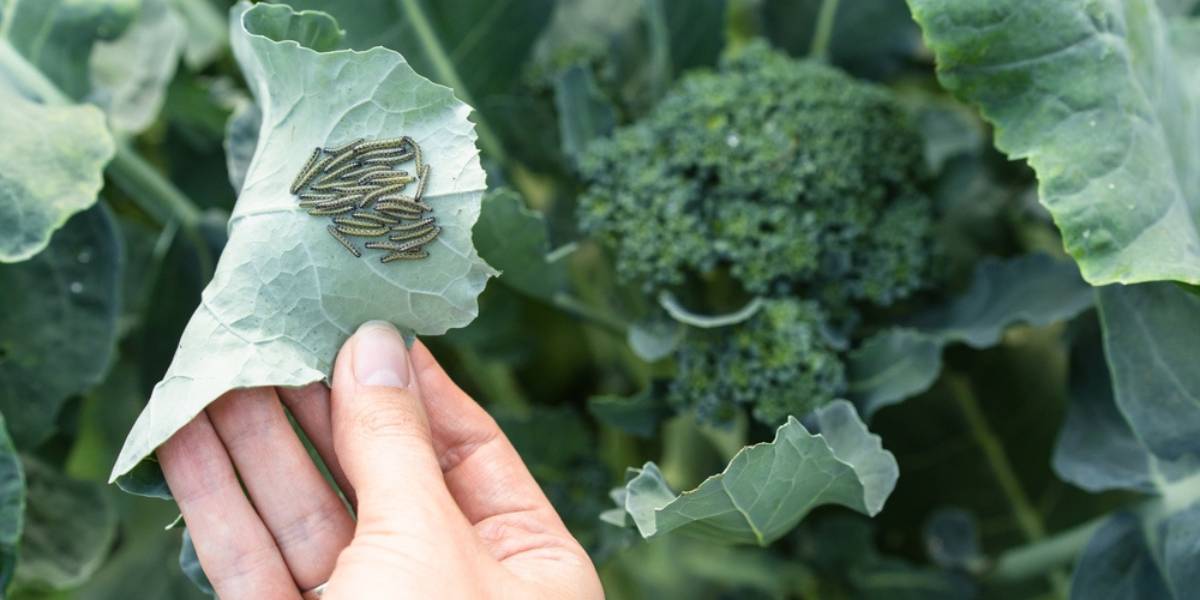Guard your broccoli against aphids, cabbage loopers, cabbage root maggots, cabbageworms, clubroot, downy mildew, nitrogen deficiency, stink bugs, white rust, and whiteflies using appropriate preventative measures and controls.
Pests:
Aphids
Keep an eye out for curled, misshapen, or yellow leaves. To control aphids, grow companion plants, use water sprays to knock them off, apply insecticidal soap, or use natural deterrents like banana or orange peels.
Cabbage Loopers
Handpick larvae off the plants, use row covers, or apply natural bacterial pesticides like Bacillus thuringiensis (Bt) to manage infestations.
Cabbage Root Maggots
Use collars around seedling stems, monitor adults with yellow sticky traps, and practice crop rotation to prevent infestations.
Cabbageworms
Handpick the worms, use row covers, and encourage beneficial insects like thyme to control their population. Spraying with Bacillus thuringiensis (Bt) can also be effective.
Stink Bugs
Remove crop residue, wear gloves while handpicking them (as they emit odor), and use row covers or insecticidal soap to deter them.
Whiteflies
Remove infested leaves, use handheld vacuums, apply insecticidal soap, and use yellow sticky traps to monitor their presence.
Diseases:
Clubroot
Destroy infected plants, solarize the soil, and maintain a neutral pH to prevent the spread of this fungal disease.
Downy Mildew
Remove plant debris, ensure good air circulation, and select disease-resistant varieties to prevent the occurrence of downy mildew.
White Rust
Destroy infected plants, practice crop rotation, and maintain a weed-free environment to reduce the chances of white rust.
Nitrogen Deficiency
Supplement the plants with nitrogen-rich fertilizers or blood meal to prevent yellowing of the leaves and stunted growth.
Broccoli cultivation can be a rewarding experience, adding nutrition and variety to your plate. With proper planting, care, and pest management, you can enjoy a bountiful harvest and explore the culinary potential of this versatile vegetable.


